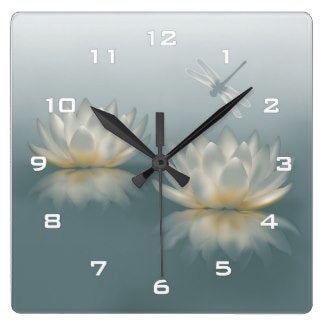
Meditation has become a bit of a phenomenon in modern times. Studies on mindfulness have increased rapidly in recent years and meditation courses have become quite popular on college campuses, corporate offices and even among celebrities.
And for good reason, the benefits of meditation have been widely documented in science, and is a very valuable tool for improving people’s lives.
Much like exercise, which trains the body, training the mind through meditation is most effective when done regularly. The hardest part of doing this is establishing it as a routine habit. So what are some good ways to develop a meditation routine?
1. Know How to Meditate
There are many ways to meditate, and its not too difficult to find a technique that works for you. Most meditation organizations will provide instructions on how to do their meditation technique online for free and you can even learn to meditate from watching a TED Talk.
My personal favorite is a technique called Dhammakaya (also called Middle Way) meditation. The main focus is a point in the center of the stomach just above the navel called the “7th base of the mind”. Of course this technique is my own personal preference and you are free to try any technique you feel most comfortable with. If you are curious about it however, you can find instructions here.
Another nice meditation tip is to keep a meditation journal to write down your experiences. It’s a great way to make use of any tips that might come in handy later. You should note that each time you meditate, you shouldn’t hold on to expectations based on past experiences or ambition. The key is not to force, but to allow your mind to be peaceful and joyous.
2. Set a Daily Goal
Setting a meditation goal gives you a concrete thing to strive for. A good method to achieve this is to gradually increase how much you meditate daily. Increasing how much you meditate daily by five minutes or so every week would be an effective way to increase how much you meditate until you reach your goal.
Measuring meditation doesn’t have to be restricted to time either, those who use mantras to aid with meditation can count mantras in their free time and set mantra count goals. The mantra I use is “Samma Arahung”, a Pali mantra, but there are plenty of other good ones to use such as “inner peace” or “clear and bright”. Mantras are great to calm the mind and clear it of any wandering.
Simple tally counters can be bought online or in thrift stores to keep track of counts, and is a great way to make use of extra time. Getting to a few thousand mantras in a day isn’t as hard as it looks, you can get several hundred in just waiting to be seated at a restaurant.
3. Find a Time
A prominent meditation master was once asked, “How many times a day do you meditate?”
This was his answer:
“I meditate twice a day. Only twice. I meditate when my eyes are open. And I meditate when my eyes are closed.”
Since you can be present and aware at anytime, meditating all the time is indeed possible, but starters should probably begin with smaller goals first.

The best way to find time to meditate is to meditate following your daily tasks. Meditating right after work or class for example is a great way to ensure you never neglect the practice. Another good one is meditating right before or after bed. Meditation has been known to help with sleep, and the mind tends to be very quiet right after waking up.
From there you can focus on incorporating meditation in your daily life. The most efficient way to maximize the benefits of meditation is to do meditation while doing other activities also. Whether it is staying aware, or repeating a mantra; there are plenty of ways to integrate meditation with your daily tasks. Meditating with your eyes open, is not much harder than meditating with your eyes closed.
4. Enlist the help of technology
A great way to help with establishing a meditation routine is using technology. There are plenty of great apps you can find online to help with the practice.

For those looking for a simple meditation timer, there are quite a few good ones that have standard features like reminders, a timer and progress tracking. A few good ones I know of are Meditate Free Meditation Timer, and Insight Timer.
For those looking for a program to get started with, there are apps for those also. Calm has a pretty extensive range of meditation programs available and the more famous Headspace has a 10 part series for free on its app.
5. Go on a Retreat

A good way to get started on, or to improve a meditation routine, is to go on a meditation retreat. Immersing yourself in nothing but meditation for a few days is a great way to catapult yourself into a solid routine. A few that I know of are S.N. Goenka’s Vipassana meditation course which consists of a ten day retreat, and the Middle Way Meditation Retreat for those who don’t mind traveling. Many Hindu or Buddhist temples will also allow guests to stay overnight and meditate with the monastics or would host retreats at little or no cost.
For those who want an easier way to get the benefits of a meditation retreat, without the hassle or cost of going to one physically, there are online options available also. Peace Revolution offers a free 42-day online program that can be done right in your home. Peace Revolution also offers various free and low-cost fellowships at some very appealing meditation sites for qualified candidates who complete their program. A pretty nice perk for just sitting at your computer each day.
Note: This is an abridged version of another article. Read the full version here.
